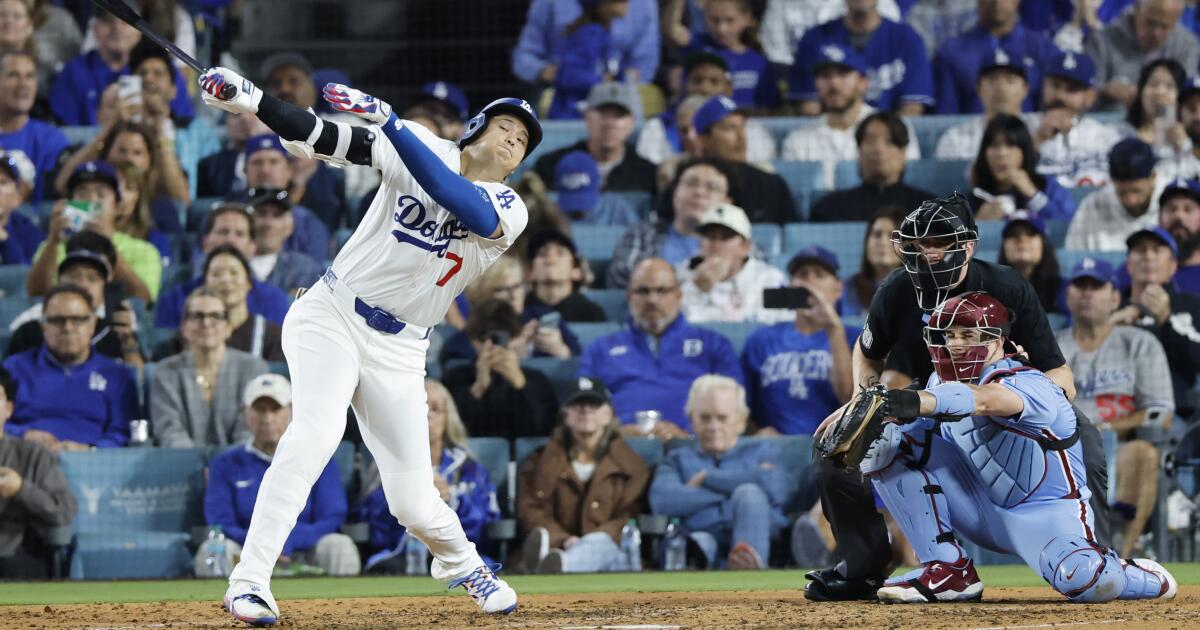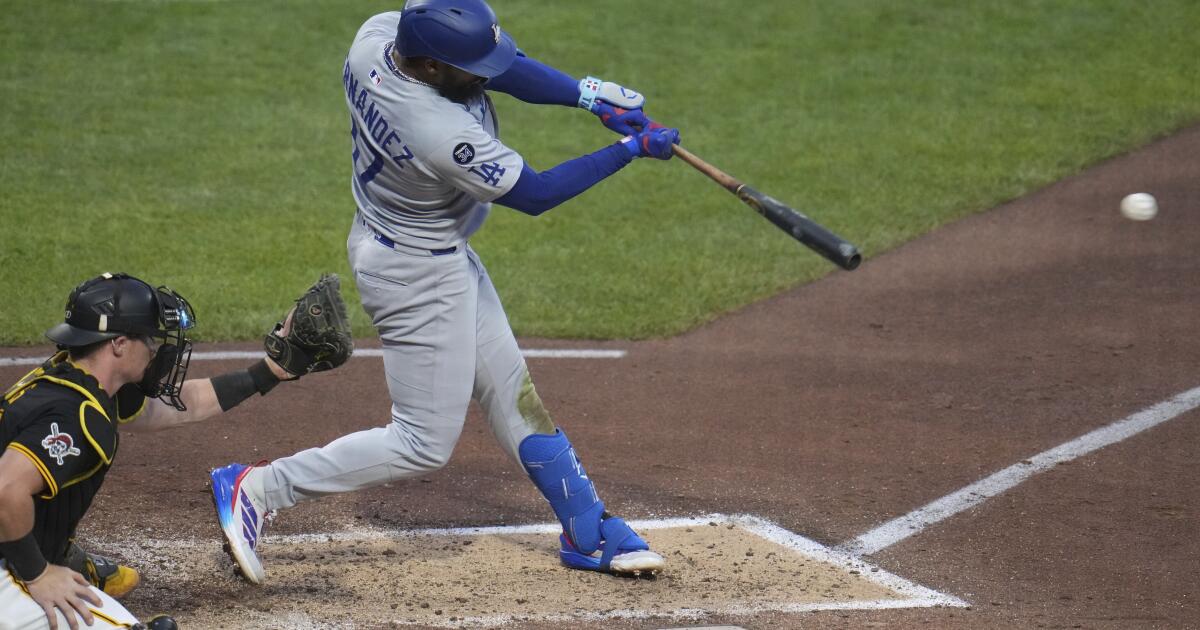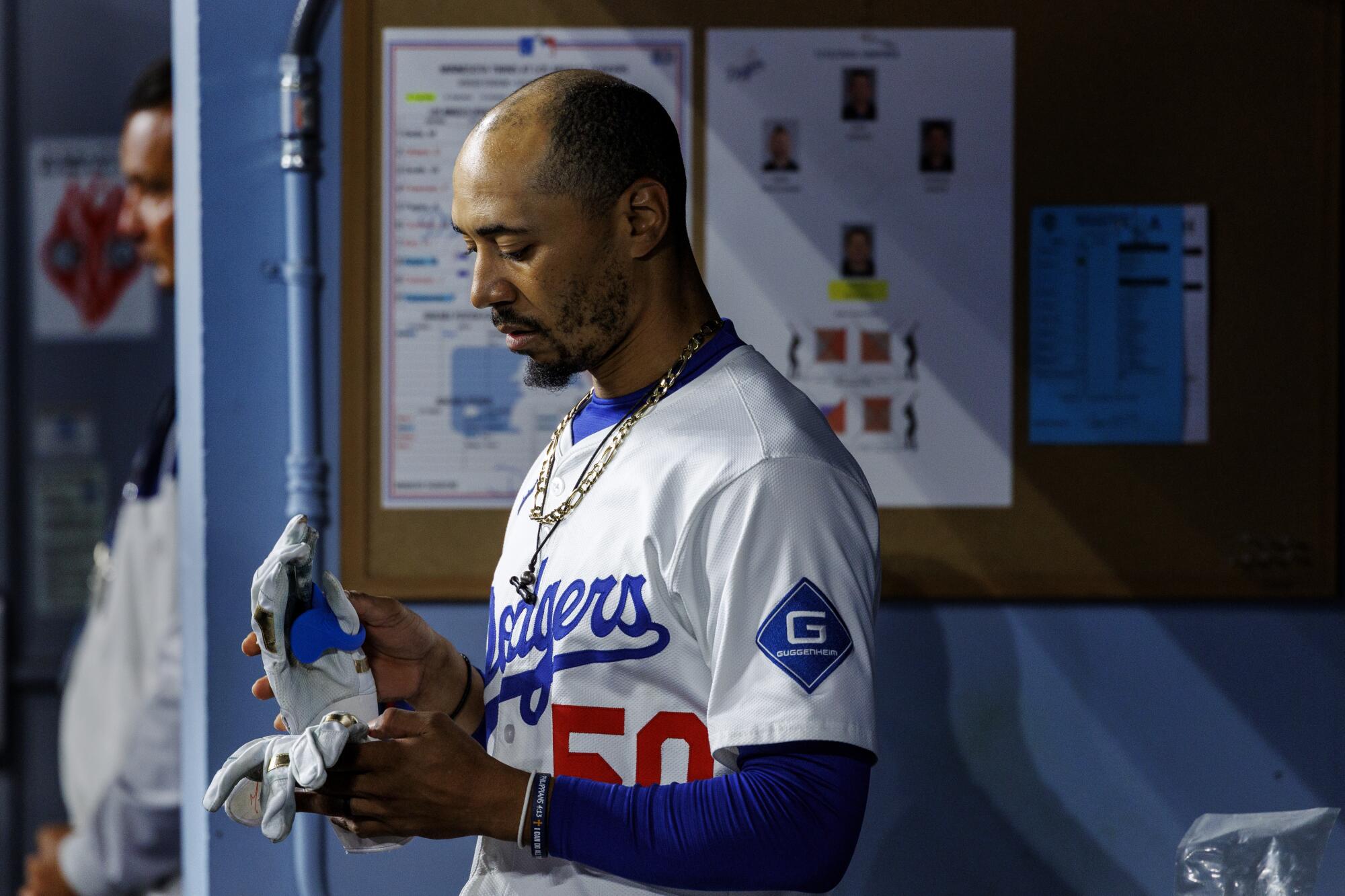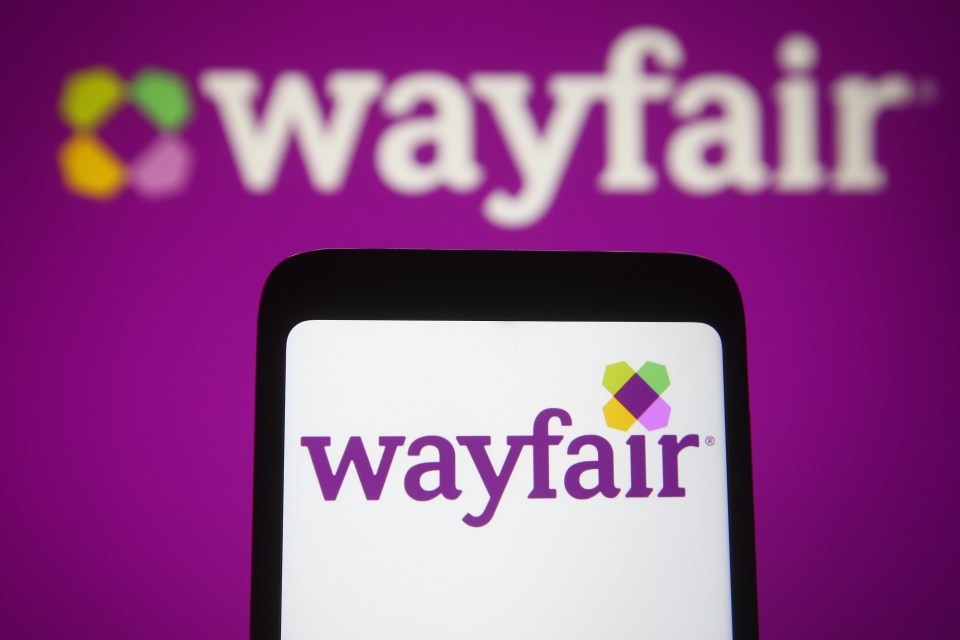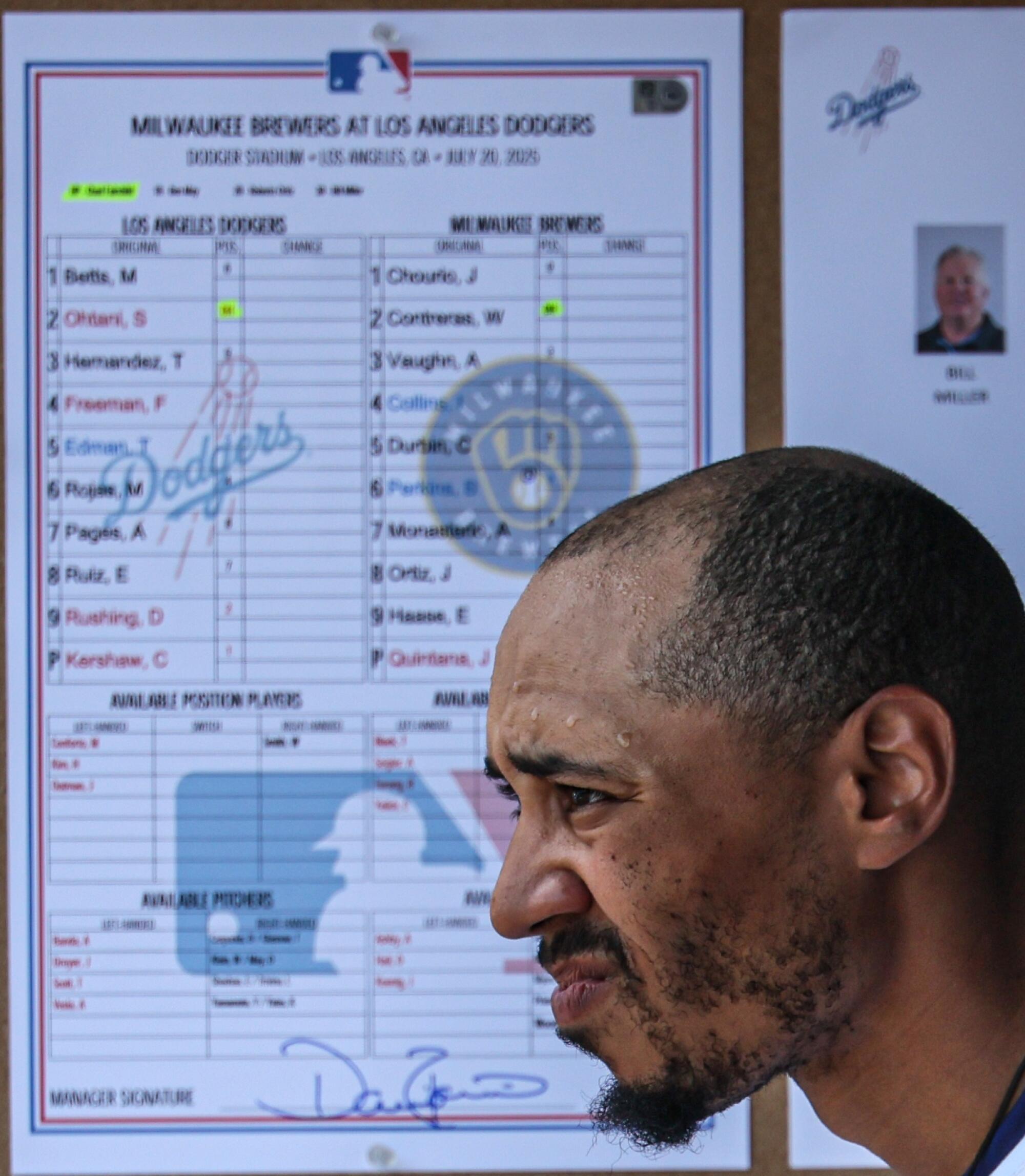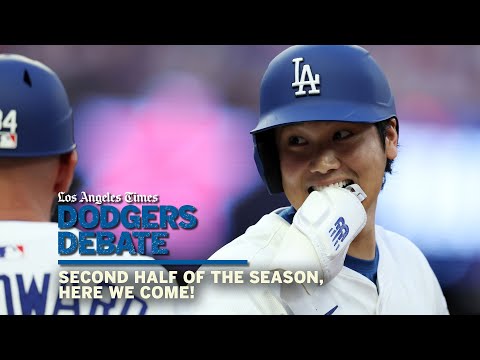The Sports Report: Shohei Ohtani tries something different to break his slump
From Jack Harris: At 5:37 p.m. Wednesday night, Michael Buble’s “Feeling Good” blared from the Dodger Stadium speakers.
Shohei Ohtani came strolling to the plate with a bat in his hands.
There was no one in the stands, of course. Nor an opposing pitcher on the mound. The Dodgers, on this workout day after returning from Milwaukee, were still some 22 hours away from resuming their National League Championship Series against the Brewers. For any other player, it would have been a routine affair.
Ohtani, however, is not just any other player.
And among the many things that make him unique, his habit of almost never taking batting practice on the field is one of the small but notable ones.
Which made his decision to do so Wednesday a telling development.
Over the last two weeks, Ohtani has been in a slump. Since the start of the NL Division Series, he is just two-for-25 with a whopping 12 strikeouts. He has been smothered by left-handed pitching. He has made poor swing decisions and failed to slug the ball.
Hernández: The Dodgers’ latest starting-pitching flex? Make the bullpen a non-factor
Dodgers’ Teoscar Hernández avoids Milwaukee’s allegedly haunted hotel at wife’s insistence
Shaikin: Dodgers starting pitchers proving to be the ultimate opposing crowd silencers
ANGELS
From Steve Henson: Witness testimony began Wednesday with an accusation of negligent supervision in the high stakes trial against the Angels by the family of deceased pitcher Tyler Skaggs.
Tim Mead, an Angels employee of 40 years, was portrayed by the plaintiffs lawyer, Rusty Hardin, during four hours of direct examination as a well-meaning boss who repeatedly ignored company policy by failing to report the improper conduct of Eric Kay, the team communications director who gave Skaggs the fentanyl pills that killed him.
Hardin brought up a litany of instances where Kay likely violated Angels rules that could have resulted in discipline and even termination long before the July 2019 road trip to Texas during which Skaggs died in his hotel room after chopping up and snorting the illicit drugs provided by Kay.
Mead acknowledged that he knew of Kay’s years-long episodes of bizarre behavior, an extramarital affair with an intern, and problems with prescription medication, but that he never reported any of it to human resources.
MLB POSTSEASON SCHEDULE, RESULTS
All times Pacific
NLCS
Dodgers vs. Milwaukee
Dodgers 2, at Milwaukee 1 (box score)
Dodgers 5, at Milwaukee 1 (box score)
Thursday: at Dodgers, 3 p.m., TBS, truTV, HBO Max, AM 570, KTMZ 1220, ESPN radio
Friday: at Dodgers, 5:30 p.m., TBS, truTV, HBO Max, AM 570, KTMZ 1220, ESPN radio
*-Saturday: at Dodgers, 5 p.m., TBS, truTV, HBO Max, AM 570, KTMZ 1220, ESPN radio
*-Monday: at Milwaukee, 2 p.m., TBS, truTV, HBO Max, AM 570, KTMZ 1220, ESPN radio
*-Tuesday: at Milwaukee, 5 p.m., TBS, truTV, HBO Max, AM 570, KTMZ 1220, ESPN radio
ALCS
Seattle vs. Toronto
Seattle 3, at Toronto 1 (box score)
Seattle 10, at Toronto 3 (box score)
Toronto 13, at Seattle 4 (box score)
Thursday at Seattle, 5:30 p.m., FS1
Friday at Seattle, 3 p.m., FS1
*-Sunday at Toronto, 5 p.m., FS1
*-Monday at Toronto, 5 p.m., Fox/FS1
*-if necessary
LAKERS
From Broderick Turner: Gabe Vincent pulled up for a three-pointer and nailed it. And then Vincent nailed his next three and his next three and his next, giving him four straight made treys.
Vincent was on fire to start the game for the Lakers during their exhibition game against the Dallas Mavericks on Wednesday night at T-Mobile Arena.
Before Vincent could even think about getting off his fifth three-pointer, Mavericks rookie Cooper Flagg smothered him. Vincent stumbled and fell, scrambling to keep control of the ball. He did and passed it to a teammate.
KINGS
The Kings have reacquired veteran goalie Pheonix Copley to provide depth while Darcy Kuemper is slowed by a lower-body injury.
The Kings acquired the 33-year-old Copley from Tampa Bay in a trade Wednesday for future considerations.
Copley spent the previous three years in the Kings’ organization, including 42 games last season for the AHL’s Ontario Reign. The former Washington netminder started 35 games for the Kings during the 2022-23 season before missing most of the 2023-24 season because of a knee surgery.
THIS DAY IN SPORTS HISTORY
1897 — Michigan beats Ohio State 34-0 at Ann Arbor, the first meeting between theses storied rivals.
1909 — In his 4th title defense Jack Johnson KOs Stanley Ketchel in the 12th round at Mission St Arena, Colma, California to retain his heavyweight boxing crown.
1932 — After a 0-0 tie earlier in the season, the Green Bay Packers beat the Chicago Bears 2-0.
1946 — Detroit’s Gordie Howe scores a goal and gets into two fights in his first NHL game. The Red Wings tie the Toronto Maple Leafs 3-3.
1964 — Babe Parilli of the Boston Patriots passes for 422 yards and four touchdowns in a 43-43 tie with the Oakland Raiders.
1968 — Americans Tommie Smith and John Carlos give black power salutes during the medal ceremonies of the 200-meter race and are later banned for life from all Olympic competition by the IOC.
1971 — Norm Ullman of the Toronto Maple Leafs records his 1,000th point in a 5-3 loss to the New York Rangers. Ullman gets two assists to become the fourth NHL player to reach the milestone.
1976 — Tony Franklin of Texas A&M kicks two field goals over 60 yards for an NCAA record. The distances are 65 and 64 yards as the Aggies beat Baylor 24-0.
1977 — The Denver Broncos intercept seven passes off Ken Stabler of the Oakland Raiders in a 30-7 victory.
1977 — The Minnesota Vikings beat the Chicago Bears 16-10 in overtime with the only successful fake field goal in NFL overtime.
1987 — Mike Tyson retains his undisputed heavyweight title with a seven-round knockout of Tyrell Biggs in Atlantic City, N.J.
1999 — Fourth-ranked Virginia Tech hangs a record-setting 62-0 loss on No. 16 Syracuse. It’s the worst shutout loss by a ranked team in the history of The Associated Press poll.
1999 — Mount Union beats Otterbein 44-20 for its 48th consecutive victory, surpassing Oklahoma’s 42-year-old all-division mark of 47 in a row.
2004 — 17-year-old Lionel Messi makes his league debut for FC Barcelona in a 1-0 win against cross-town rivals Espanyol.
2004 — Mount Union beats Marietta 57-0 for its 100th consecutive regular-season victory. The Purple Raiders’ last regular-season loss was on Oct. 15, 1994, at home against Baldwin-Wallace.
2011 — Danell Leyva becomes the first American man gymnast to win a gold medal at the World Championships since 2003. Leyva wins the parallel bars title to become the first gold medalist for the U.S. since Paul Hamm claimed the floor exercise and all-around titles in 2003.
2011 — Dan Wheldon, 33, dies in a fiery 15-car wreck at Las Vegas Motor Speedway when his car flew over another on Lap 13 and smashes into the wall just outside turn 2.
2017 — Louisville’s Athletic Assn. officially fires coach Rick Pitino nearly three weeks after the school acknowledged that its men’s basketball program is being investigated as part of a federal corruption probe. The association, which oversees Louisville’s sports programs and is composed of trustees, faculty, students and administrators, vote unanimously to oust the longtime Cardinals coach after a board meeting.
Compiled by the Associated Press
Until next time…
That concludes today’s newsletter. If you have any feedback, ideas for improvement or things you’d like to see, email me at [email protected]. To get this newsletter in your inbox, click here.
